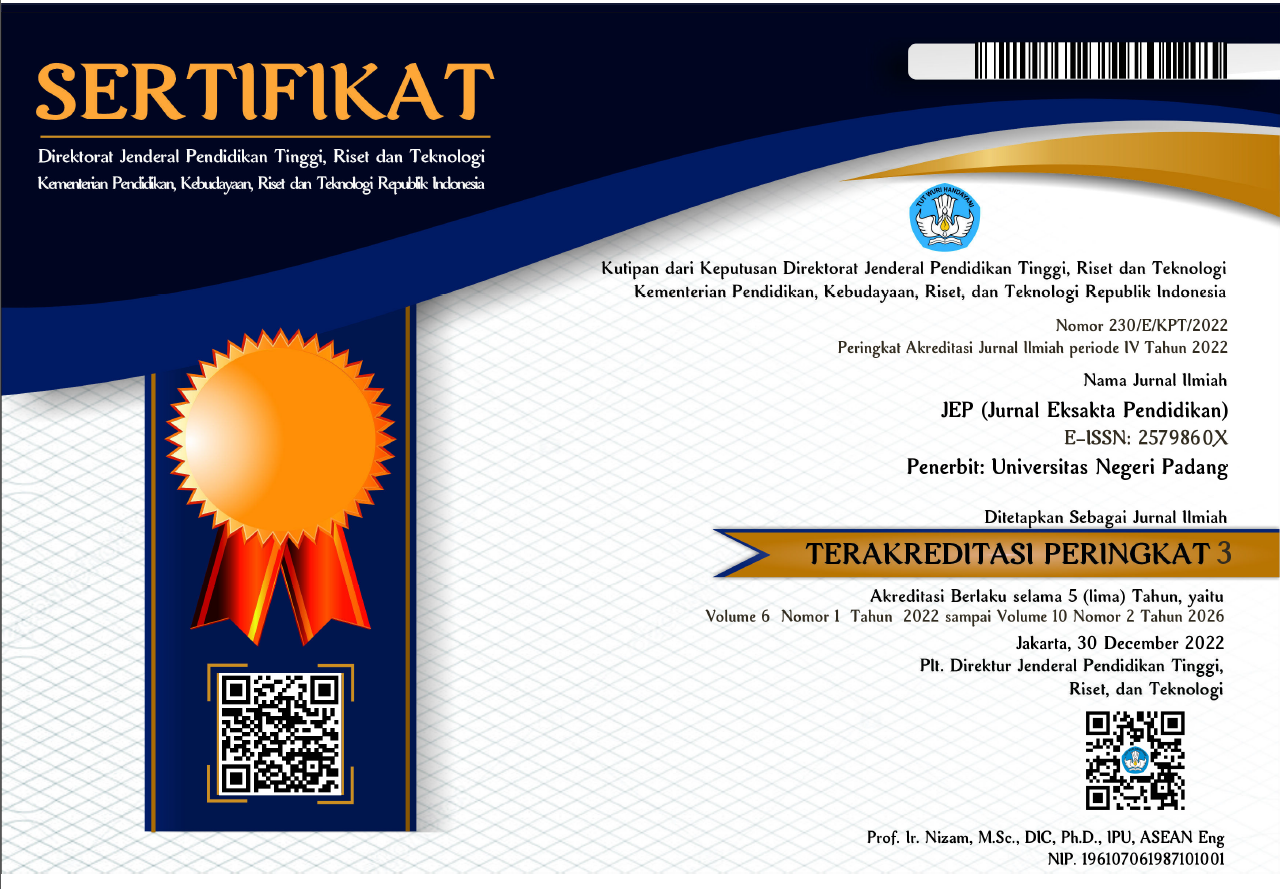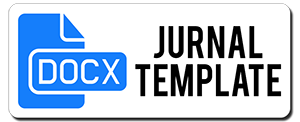Lecturers’ Opinions and Preferences: Printed Book or E-Book for Science Teaching
Abstract
Even while printed books and electronic books frequently contain the same material, they differ greatly from one another and each format has its own benefits and drawbacks. This study's purpose is to acquire a thorough grasp of the opinions and preferences of the lecturers in employing book formats for science teaching. The findings of the study would assist other lecturers in thinking through and selecting implementation strategies for employing those two types of book formats. Then, this study identifies the advantages and disadvantages of digital versus print books as well as the reasons why lecturers favor one over the other through this research. This study used a qualitative phenomenological methodology. The stages of the research are selecting research informants, collecting the data and analysis to drawing conclusions. The instrument used in this study is in depth interview. Data collection was carried out through interviews with lecturers who have used both books’ formats. Based on the results of the study it was found that there were 35% lecturers who preferred to use printed books, 10% lecturers who preferred to uses e-books, and 55% lecturers who preferred to use both printed and e-books. They preferences were based on the situational of teaching and learning process.
Downloads
References
Abernathy, D.J. (2020). Education Fights the Pandemic: "Online learning is not the next big thing, it is the now big thing”. LAP LAMBERT Academic Publishing.
Byars, M. N. (2015). Printed books versus digital books (Bachelor’s thesis). California Polytechnic State University, San Luis Obispo
Bouck, E. C., Weng, P., & Satsangi, R. (2016). Digital versus traditional: Secondary students with visual impairments' perceptions of a digital algebra textbook. Journal of Visual Impairment & Blindness, 110(1), 41-52.
Creswell, J. W. (2015). Research Design: Qualitative, Quantitative, and Mixed Methods Approaches. Thousand Oaks, CA: Sage Publications, Inc.
Dobler, E. (2015). E-textbooks. Journal of Adolescent & Adult Literacy, 58(6), 482-491.
Embong, A. M., Noor, A. M., Hashim, H. M., Ali, R. M., & Shaari, Z. H. (2012). Ebooks as Textbooks in The Classroom. Procedia - Social and Behavioral Sciences, 47, 1802–1809.
Estévez, J. A., Castro-Martínez, J., & Granobles, H. R. (2015). La educación virtual en Colombia: Exposición de modelos de deserción [Virtual education in Colombia: Exhibition of desertion models]. Apertura, 7 (1), 1 - 10.
Fojtik, Rostislav. (2015). Ebooks and Mobile Devices in Education. Procedia – Social and Behavioral Sciences, 182, 742-754.
Gibson, C., & Gibb, F. (2011). An evaluation of second-generation ebook readers. The Electronic Library. 29(3), 303–319.
Guzacheva, N. (2020). ZOOM Technology as an Effective Tool for Distance Learning. Bulletin of Science and Practice, 6 (5), 457–460.
Häkkinen, Jukka, Järvenpää, Toni, Pölönen, Monika. (2012). Reading e-books on a nearto-eye display: Comparison between a small-sized multimedia display and a hard copy. Vol 33 (3). p157-167.
Isfaeni, H., Corebima, A.D., Suwono, H., Rohman, F. (2018). The effectiveness of the printed books as a learning material in a one-day the molecular biology course. Biosfer: Jurnal Pendidikan Biologi. 11 (2), 107-112.
James, F.F. 2008. “The Electronic Book and PDA: Looking Beyond The Physical Codex. http://www.scinet.cc/articles.
Jeung, H. (2012). A comparison of electronic books and paper books on reading comprehension, eye fatigue, and perception. The Electronic Library, 30 (3), 390-408.
Khalid, Adeel. (2014). Text Books: e-book Vs. Print. Journal of Education and Human Development. June 2014, Vol. 3, No. 2, pp. 243-258.
Kreton, S. and Naletelich, K. (2016) How e-readers have changed personal connections with books. Qualitative Market Research: An International Journal, 19 (4), pp. 433-452.
Lee, H. J., Messom, C., & Yau, K. A. (2013). Can an electronic textbooks be part of K-12 education? Challenges, technological solutions and open issues. Turkish Online Journal of Educational Technology - TOJET, 12(1), 32-44.
Liaw, S. S., & Huang, H. M. (2016). Investigating learner attitudes toward e-books as learning tools: based on the activity theory approach. Interactive Learning Environments, 24(3), 625–643.
Lynch, K. (2012). E-books: The future for publishers and libraries. Collection Building, 31 (2), 78-80.
Millar, M., & Schrier, T. (2015). Digital or printed textbooks: Which do students prefer and why? Journal of Teaching in Travel & Tourism, 15(2), 166-185.
O’Toole, K., & Kannass, K. (2018). Emergent Literacy Skills in Print and Electronic Contexts: The Influent of Book Type, Narration Source, and Attention. Journal of Experimental Child Psychology, 173, 100-115.
Piotrowski, J. T., & Krcmar, M. (2017). Reading with hotspots: Young children’s responses to touchscreen stories. Computers in Human Behavior, 70, 328-335.
Pratiwi, A. D., Afandi, A., & Wahyuni, E. S. (2019). Potensi Aplikasi Zoom Cloud Meetings Dalam Pembelajaran Di Era Digital. In Prosiding SeminarNasional FKIP 2019: Optimalisasi Kualitas Pembelajaran Abad 21 di Era Revolusi Industri 4.0 dalam Menghasilkan Pendidikan yang Profesional. (pp. 1747–1754).
Richter, A., & Courage, M. L. (2017). Comparing electronic and paper storybooks for preschoolers: Attention, engagement, and recall. Journal of Applied Developmental Psychology, 48, 92-102.
Sage, K., Augustine, H., Shand, H., Bakner, K., & Rayne, S. (2019). Reading from print, computer, and tablet: Equivalent learning in the digital age. Education and Information Technologies, 24(4), 2477-2502.
Sehn, T. C. M. & Fragoso, S. (2015). The synergy between eBooks and printed books in Brazil. Online Information Review, 39 (3), 401-415.
Sidabutar, M.N.A., et, al. 2022. Reading Digital Texts vs. Reading Printed Texts: Which One Is More Effective in Iranian EFL Context?. Hindawi Education Research International. Vol. 2022.
Singer, L. M., & Alexander, P. (2017). Reading across mediums effects of reading digital and print texts on comprehension and calibration. The Journal of Experimental Education, 85(1), 1-18.
Srirahayu & premananto. (2020). The Printed Book And Electronic Book (Ebook) Experiences Of Digital Natives In Indonesia. Journal Of Southwest Jiaotong University Vol. 55 No. 6 Dec. 2020.
Tuah, T., Herman, N. D., & Maknun, J. (2019). E-Books in Teaching and Learning Process. Proceedings on the 5th UPI International Conference on Technical and Vocational Education and Training. May.
Vaala, S. & Takeuchi, L. (2012). Co-reading with Children on iPads: Parents’Perceptions and Practices. The Joan Ganz Cooney Center, Quick Report.
Walsh, G. (2016). Screen and paper reading research - a literature review. Australian Academic & Research Libraries, 47(3), 160-173.
Yee, Renee Chew Shiun. (2015). Perceptions of Online Learning in an Australian University: Malaysian Students’ Perspective – Support for Learning. International Journal of Information and Education Technology, 5(8).
Copyright (c) 2022 Syilvia Wenny J, Yahfenel Evi Fussalam, Rian Dani

This work is licensed under a Creative Commons Attribution 4.0 International License.

This work is licensed under a Creative Commons Attribution 4.0 International License.




_(2579-860X).png)
_(2614-1221)1.png)




